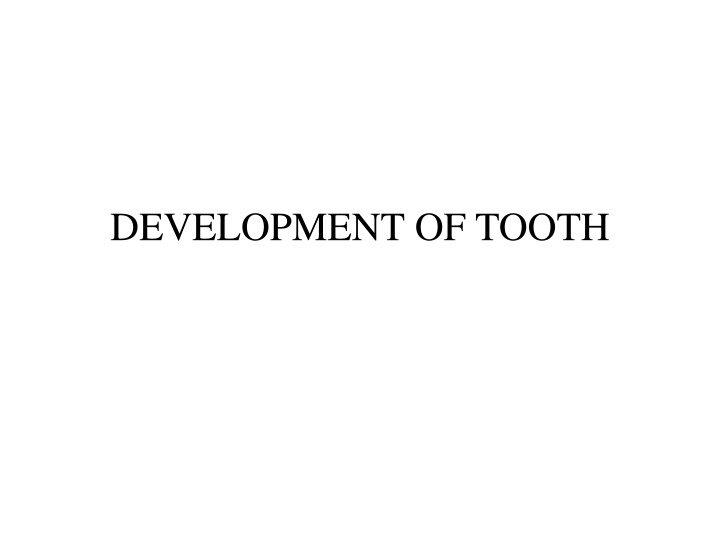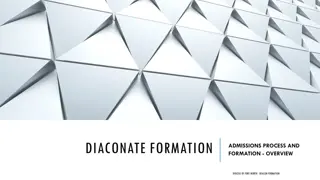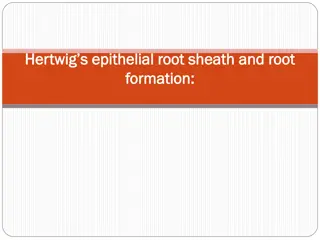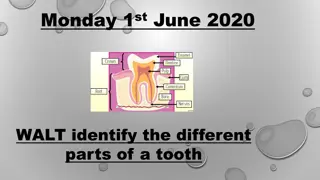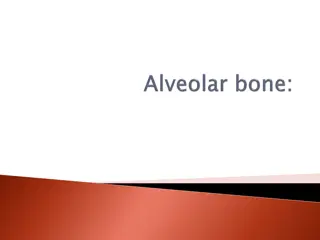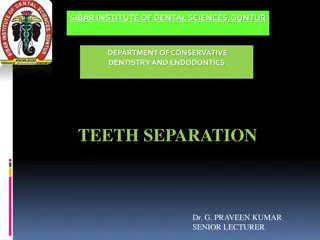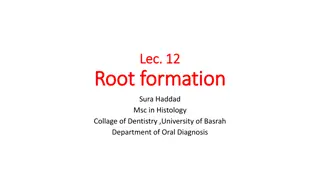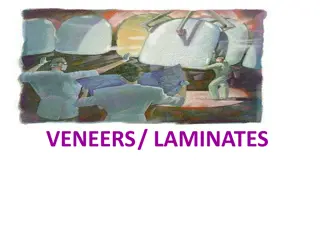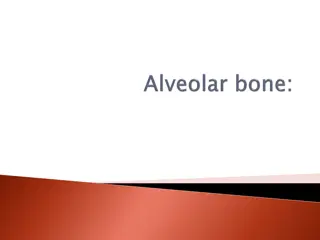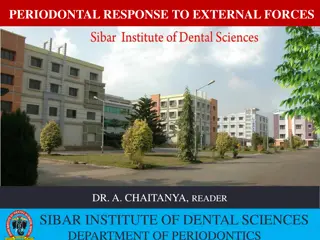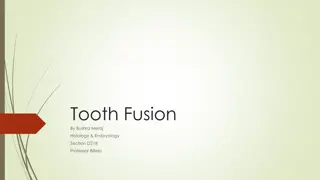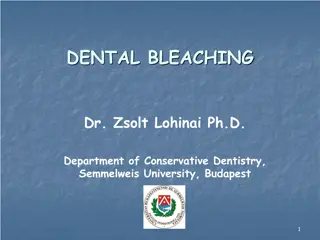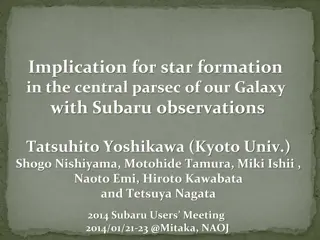Development of Tooth Structures and Formation Process
The development of tooth structures such as successional lamina, enamel knot, cord, navel, and septum involves intricate processes from the prenatal stage to specific ages. Understanding these formations is crucial for dental studies and oral health assessment.
Download Presentation

Please find below an Image/Link to download the presentation.
The content on the website is provided AS IS for your information and personal use only. It may not be sold, licensed, or shared on other websites without obtaining consent from the author.If you encounter any issues during the download, it is possible that the publisher has removed the file from their server.
You are allowed to download the files provided on this website for personal or commercial use, subject to the condition that they are used lawfully. All files are the property of their respective owners.
The content on the website is provided AS IS for your information and personal use only. It may not be sold, licensed, or shared on other websites without obtaining consent from the author.
E N D
Presentation Transcript
Purpose Statement At the end of the lecture student should be able to describe the Successional lamina, Enamel Knot , cord , navel & septum, Gubernacular canal, Membrana preformativa, Enzymes of stellate reticulum
Learning Objectives At the end of the lecture the student should be able to S.N. Learning Objectives Domain Level Criteria Condition 1 Write about Successional lamina Gubernacular canal Cognitive Must Know All 2 Define Enamel Knot , cord , navel & septum Cognitive Must Know All 3 Define Membrana preformativa Cognitive Must Know All 4 Enumerate Enzymes of stellate reticulum Cognitive Must Know All
CONTENTS Successional lamina Gubernacular canal Enamel Knot Enamel Cord Membrana preformativa
Successional lamina The lingual extension of the dental lamina is termed as successional lamina and it develops from the 5th month in utero (permanent central incisor) to the tenth month of age (second premolar).
a) Oral epithelium; (b) dental lamina; (c) lateral lamina; (d) successional lamina; (e) tooth bud or enamel organ (future tooth).
Epithelial remnants from the dental lamina (ER, shown as tiny circles) localized to the gubernacular canal that links the tooth sac (TS) around the developing permanent successor (PTB) with the lingual gingiva. DI: deciduous incisor.
Gubernacular canal Although the permanent incisors, canines and premolars, eventually become isolated in their own bony crypts, they maintain continuity with the connective tissue of the lamina propria of the overlying gingiva. This is achieved through the persistence of an intrabony canal or corridor called the gubernaculum dentis or gubernacular canal, which connects the two
Enamel Knot The cells in the centre of the enamel organ are densely packed and form what is called enamel knot.
2 Formation of the Fig. deciduous occurs on the labial aspect of the dental lamina (DL). An epithelial bridge (lateral lamina, LL) connect DL with the bell- shaped tooth enamel knot. The free tip of DL proliferates ectomesenchyme successional providing the anlage for a permanent tooth. papilla (DP), dental follicle (DF). tooth germs is seen to germ. EK: into as the the lamina (SL) Dental
Enamel Cord The vertical projection of the enamel knot is called enamel cord. Enamel Septum When the enamel chord extends to meet the outer enamel epithelium it is termed as enamel septum, which divides the stellate reticulum into 2 parts
Function The function of enamel knot and chord may be to act as a reservoir of dividing cells for the growing enamel organ. Enamel knot also expresses many growth factors which are essential for determining the shape of the tooth.
Enamel Navel The outer enamel epithelium at the point of the meeting shows a small depression called enamel navel , which resembles the umbilicus.
Membrana preformativa The basement membrane that seperates the enamel organ and the dental papilla just prior to dentin formation is called membrana preformativa.
Enzymes of stellate reticulum Alkaline phosphatase-In hard tissue it is implicated in the process of mineralization, in synthesis of organic matrix, osteogenesis and Dentinogenesis. In developing in molar & incisor it is present in stratum intermedium, odontoblast and subadjacent Korff s fibres and the ground substance.
Succinate dehyrogenase -It is closely related to cytochrome oxidase in the mitochondria. Amino peptidase- are proteolytic enzymes that hydrolyse certain terminal peptide bond. Demonstrated in odontoblast also during dentinogenesis
Summary Successional lamina Enamel Knot , cord , navel & septum Gubernacular canal Membrana preformativa Enzymes of stellate reticulum
BIBLIOGRAPHY Color Atlas And Text Book Of Oral Anatomy, Histology Berkovitz, B. 1STedition. Oral Development and Histology Avery, j. K.1st edition. Orban's Oral Histology and Embryology Bhaskar, s. N.11thedition. Oral Histology : Development, Structure and Funct Tencate, a. R. 4thedition. Dental Embryology, Histology & Anatomy. Marry Bath- Balogh Inergaret. 2ndedition.
